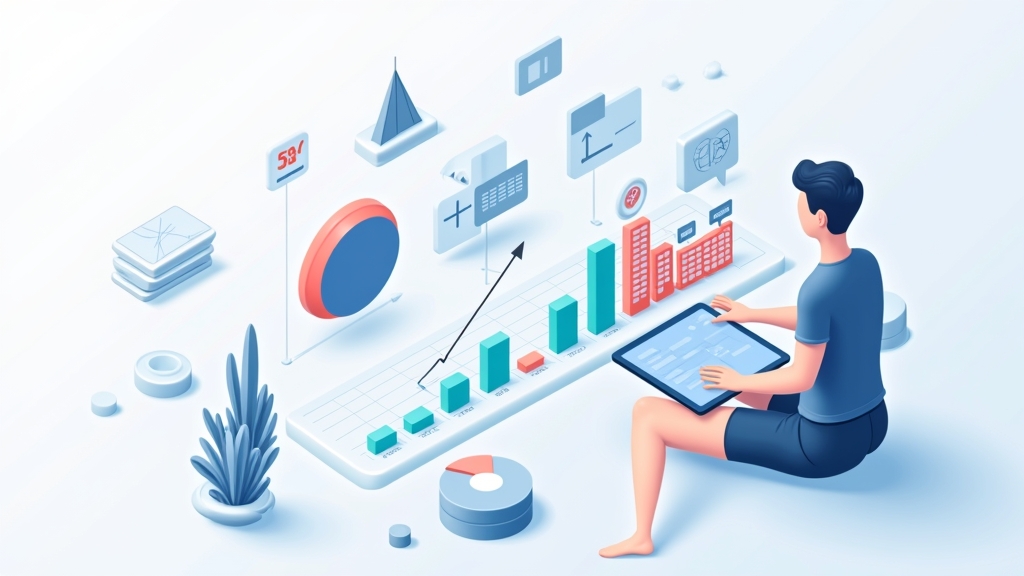The Importance of Continuous Feedback in Personal Development
Imagine being able to identify your blind spots and enhance your qualities with the precision of a GPS for personal growth. Systematic feedback works exactly like this: it provides a detailed map of where you are and where you can go, transforming abstract perceptions into concrete actions. Without this mechanism, we are vulnerable to repeating limiting patterns and missing crucial opportunities for evolution, while with it we gain clarity and direction to navigate professional and personal challenges.
How many times have you wondered why certain goals always seem far away, even with dedicated effort? The answer often lies in the lack of a reflective mirror that shows not only what we do, but how we do it and what impacts we generate. Developing an internal culture of constant self-evaluation allows you not to rely exclusively on sporadic external opinions, thus creating a solid foundation for measurable and sustainable progress.
Think of feedback as the fuel that powers the engine of your development - without it, we move slowly or don't even realize we're stagnating. By incorporating regular practices of collecting and analyzing information about your performance, you take the reins of your growth and accelerate your journey towards the best version of yourself. How about starting to build this transformative system today?
Defining Clear Objectives for Your Feedback System
Before collecting any kind of information, it is essential to know what you want to achieve with this process. Well-defined objectives act as beacons that guide the entire system, ensuring that the feedback collected is relevant and actionable. For example, if your focus is to improve your communication skills in meetings, the questions and metrics should revolve around this specific theme, rather than generic aspects.
Without clear goals, you run the risk of accumulating scattered data that contributes little to your real progress. Ask yourself: where do I want to be in six months? What skills do I need to develop to get there? Establish measurable criteria"Increase my active participation in team discussions by 30%" turns vague aspirations into tangible targets. This precision not only directs your efforts, but also makes it easier to evaluate the results obtained.
Remember that ambitious goals are motivating, but they need to be broken down into achievable stages to avoid frustration. Use established methodologies such as SMART (Specific, Measurable, Achievable, Relevant and Time-bound) to structure your goals and align them with your greater purpose. Want a detailed guide to setting effective goals? Check out this material from Harvard Business Review: How to Set SMART Goals.
Sources and Methods for Collecting Relevant Feedback
Now that you know where you want to go, it's time to identify where the information that will feed your system will come from. Diversified sources offer rich, multidimensional perspectives - from critical self-assessments to the opinions of colleagues, mentors and even technological tools. Imagine combining your own daily reflections with a supervisor's observations and data from productivity applications; this triangulation provides a much more complete view than just a single angle.
Formal and informal methods complement each other perfectly in this process. You can create periodic questionnaires using platforms such as Google Forms to collect structured impressions from your network of contacts, while keeping a personal diary to record spontaneous insights and immediate reactions to challenging situations. Don't underestimate the power of open questions such as "What could I have done differently in this situation?" which provoke deep and revealing reflections.
In addition to human sources, take advantage of technological resources that offer behavioral analytics, such as habit trackers or meeting recorders (with consent, of course). Tools like Trello for organizing goals or Loom for recording and reviewing presentations are practical examples of how technology can amplify your capacity for self-analysis. Explore options at: Feedback Collection Tools.
Processing and Analyzing the Information Obtained

Collecting data is only the first step; the real value emerges when we turn this information into actionable insights. Create a revision routine weekly or fortnightly to examine the accumulated feedback, identifying patterns, contradictions and hidden opportunities. Separate comments into categories such as "strengths", "areas for improvement" and "concrete suggestions" to organize your thinking and prioritize actions.
During the analysis, look for repeated signs that indicate consistent behaviors - both positive and limiting. If three different sources mention your difficulty in delegating tasks, for example, this probably represents a critical area for your development. Use synthesis techniques such as mind maps or comparison tables to visualize connections between different feedbacks and form a coherent picture of your overall performance.
It's crucial to approach this stage with an open mind and curiosity, not defensiveness. Instead of justifying or dismissing criticism, ask yourself: "What can I learn from this perspective?" and "How can I use this to grow?". Qualitative analysis tools such as the thematic coding method can help extract deep meanings from textual feedback. To find out more, visit: Feedback Analysis Methods.
Turning Insights into Action and Adjusting the System
Insights without implementation are like maps without a journey - interesting, but fruitless. Develop a specific action plan for each area identified, defining concrete steps, realistic deadlines and progress indicators. If you've discovered that you need to improve your time management, for example, you could commit to using the Pomodoro technique for two hours a day and reviewing your schedule every Friday.
Implementation should be iterative - try out new approaches, evaluate results and adjust as necessary. Celebrate small victories to keep your motivation high, but also be prepared to revisit strategies that didn't work as expected. Remember: personal development is a marathon, not a sprint, and every adjustment along the way is a learning opportunity.
Your feedback system should evolve with you, so periodically review its structure and effectiveness. Ask yourself: "Am I collecting the right information?" and "How can I make this process more efficient?". Continuous improvement of the system is just as important as the continuous improvement it promotes. For action plan templates, see: Action Plan Templates.
Cultivating a Growth Mindset Through Feedback
Perhaps the most transformative aspect of a well-constructed feedback system is its ability to reinforce a growth mindset. Embrace feedback as a gift even when it's hard to hear, recognizing that every piece of constructive criticism is an opportunity for evolution in disguise. People who thrive professionally and personally understand that feedback is not about judgment, but about continuous learning.
Develop the emotional resilience not to personalize negative comments, separating your personal value from your modifiable actions. Remember: feedback is about behavior, not identity - they said your presentation was confusing, not that you were incompetent. This subtle but crucial distinction allows you to receive difficult information without crumbling, maintaining the confidence you need to keep improving.
Actively encourage feedback in your network, creating a virtuous cycle of mutual development. By showing openness to receiving and acting on suggestions, you inspire others to do the same and build an ecosystem where everyone grows together. The journey of self-development is infinitely richer when traveled with awareness and the courage to truly see yourself.


